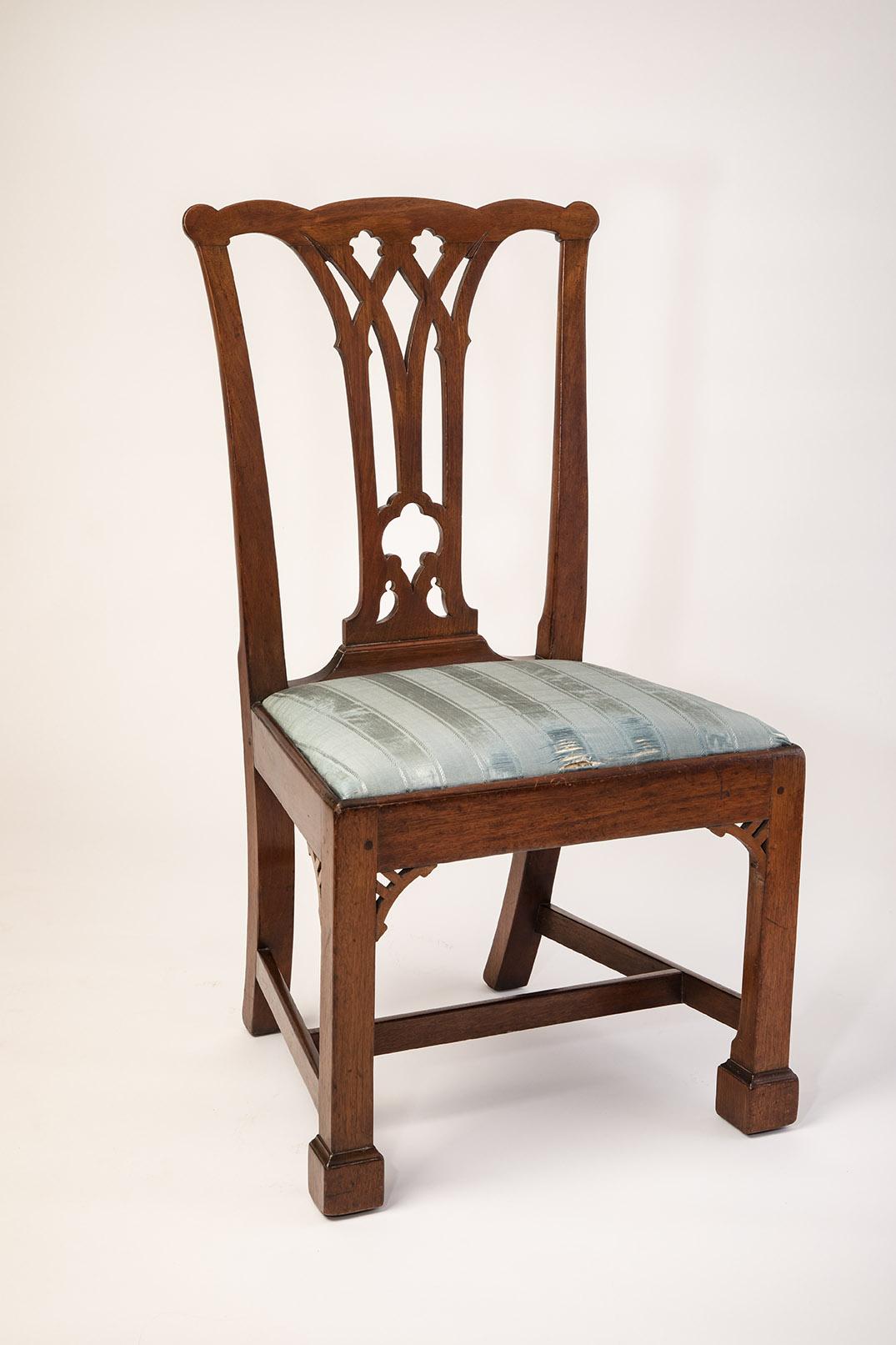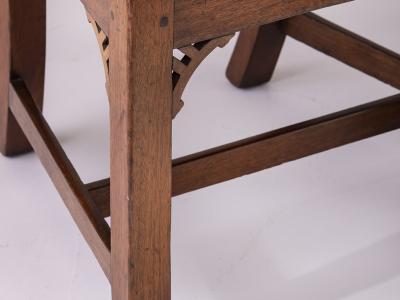Side chair (one of a pair)
Delaware or Delaware Valley
1770-1790
Measurements
38 1/4 in x 21 1/2 in x 19 5/8 in
Materials
Mahogany; white cedar (strip below the splat shoe), hard pine (slip seat)
Credit Line
Historic Odessa Foundation, The David Wilson Mansion, Inc.
Accession Number
1971.593
Inscription
“I” is chiseled into the middle of the front seat rail rabbet. The mate (1971.593.2) is marked “IV.” The original slip seat is marked "VI."
Condition Notes
Chair 1971.593.1 has a line of nail holes around the inside of the seat rails suggesting the possibility that at one time a shelf existed to support a chamber pot underneath the removable slip seat. The other chair (1971.593.2) has nail holes around the outsides of the seat rails where upholstery was once tacked over the rails. The rear legs of both chairs have been ended out 1 inch. One original slip seat survives; the other is a replacement.
Provenance
The pair of chairs was bequeathed in 1942 by Dr. and Mrs. J. Newberry Reynolds to The David Wilson Mansion, Inc.
Comments
The front Marlborough legs on these Gothic-splat side chairs indicate a date of manufacture no earlier than the late 1760s. The front legs have their original decorative brackets nailed into the corners, and the legs terminate in large blocks, created by gluing shaped pieces of wood to the leg sides. A price list of furniture, published in 1772 for the Philadelphia furniture-making trade, listed an entry under “Chairs Marlborough feet” for chairs “without bases or brackets,” thereby identifying these particular features.
The rear seat rail has a lateral strip of wood, about 1-inch deep, glued to the inside face immediately below the shoe (which secures the base of the splat). This structurally unnecessary strip merely fills the space below the shoe and behind the slip seat. It represents a rare detail noted in some chairs with Delaware histories, including the set of cabriole-leg chairs made for William Corbit (acc. no. 1976.114). Another set with this feature, made in Philadelphia, (Winterthur Museum, acc. no. 1959.3421), raises the fascinating question of whether any historical circumstances tie the chairs together. No other significant construction details link them.
Chair 1971.593.1 was photographed.
Bibliography
Zimmerman, A Storied Past, 123-125

